Photo

The Cunning Agha and Hidden Riches
Among the Aghas, Bektash Agha stood out as the most cunning. He amassed wealth through deceitful means and concealed it in a treasure hidden beneath the pool in his garden.
Grand Viziers and Trade Ventures
During a period in history, viziers and even Grand Viziers engaged in trade activities. Grand Viziers like Dervish Pasha dispatched expeditions to distant lands such as Baghdad, Basra, India, and Persia to import valuable commodities like pearls and cloth, which were then sold in collaboration with traders.
Turbulent Rule and Rebellions
The dominance of the Aghas persisted for two years, marked by increasing unrest fueled by dissatisfaction over ‘ulufe’ payments. Rebellion reached its peak outside the residence of the Sheikhulislam, with protesters declaring the Ottoman Empire in turmoil. Utilizing a ‘fatwa’ obtained forcefully, they orchestrated the downfall of Queen Mother Kosem Sultan.
The Fall of the Aghas and New Leadership
As the Aghas lost their protector and succumbed to execution one by one, the reins of power shifted. Successive changes in Grand Viziers ensued, ultimately ending the era dominated by Queen Mother Turhan Sultan with the ascension of Kopriilu Mehmet Pasha.
Reform Efforts and Financial Oversight
Historical accounts highlight the efforts of leaders like Tarhuncu Ahmet Pasha to address the state’s financial challenges. In 1604, he initiated a campaign against bribery, targeting high-ranking officials who accepted bribes. This initiative aimed to reform the treasury and restore fiscal integrity Istanbul Walking Tour.
Katip Qelebi’s Memoirs and Reform Proposals
Katip Qelebi, in his renowned memoirs, recounted efforts to address the treasury’s woes during Sultan Mehmet IV’s reign. He prepared a comprehensive treatise divided into four parts, outlining measures to improve governance and financial management. Despite initial skepticism, Katip Qelebi hoped that future sovereigns would heed the proposed reforms and take decisive action for the empire’s benefit.
0 notes
Photo

Unimaginable Loss and Sorrow
In the aftermath of devastation, we encountered scenes of profound grief and despair.
A Heartrending Sight
Entering the next house, we found two women, one elderly and the other young, engaged in a haunting ritual. Rocking back and forth, they repeated sorrowful words: “I had a home, and now it’s gone; I had a husband, now I’m a widow; I had children, now I have only one.” Their actions spoke volumes—beating their heads and wringing their hands, they mourned their irreparable losses.
Survivors’ Sorrow
These women were survivors of a massacre, returning home for the first time since the tragedy. Their courage to return was fueled by the presence of foreigners like us or Mr. Baring, offering protection amidst their fears. Yet, their anguish was palpable as they keened, lamenting over their shattered lives.
The Resonance of Grief
As we ventured further, we encountered more grieving souls. Some sat upon the rubble that once marked the entrances to their homes, while others paced before their doors, their anguished cries echoing through the desolate streets. Tears were scarce in this sea of mourning—instead, there was a profound sense of desolation, a dry and relentless sorrow that had drained them of tears long before Tour Packages Balkan.
A Collective Lament
As we continued, more joined our procession, swelling our ranks to hundreds, mostly comprised of women and children. Their mournful cries followed us wherever we went, a chorus of sorrow that seemed to pierce the heavens.
Understanding Batak
Before delving deeper into these harrowing events, it’s essential to provide context about Batak.
A Community Shattered
Batak was once a thriving settlement boasting nine hundred houses and an estimated population of 8,000 to 9,000 inhabitants. Unfortunately, due to the lack of reliable census data in Turkey, the exact figures remain uncertain. However, the conventional estimation of five persons per household often falls short in the context of Bulgaria.
In the wake of unimaginable tragedy, Batak’s once-vibrant community lay in ruins, its people shattered by the horrors they endured.
0 notes
Photo

Unimaginable Loss and Sorrow
In the aftermath of devastation, we encountered scenes of profound grief and despair.
A Heartrending Sight
Entering the next house, we found two women, one elderly and the other young, engaged in a haunting ritual. Rocking back and forth, they repeated sorrowful words: “I had a home, and now it’s gone; I had a husband, now I’m a widow; I had children, now I have only one.” Their actions spoke volumes—beating their heads and wringing their hands, they mourned their irreparable losses.
Survivors’ Sorrow
These women were survivors of a massacre, returning home for the first time since the tragedy. Their courage to return was fueled by the presence of foreigners like us or Mr. Baring, offering protection amidst their fears. Yet, their anguish was palpable as they keened, lamenting over their shattered lives.
The Resonance of Grief
As we ventured further, we encountered more grieving souls. Some sat upon the rubble that once marked the entrances to their homes, while others paced before their doors, their anguished cries echoing through the desolate streets. Tears were scarce in this sea of mourning—instead, there was a profound sense of desolation, a dry and relentless sorrow that had drained them of tears long before Tour Packages Balkan.
A Collective Lament
As we continued, more joined our procession, swelling our ranks to hundreds, mostly comprised of women and children. Their mournful cries followed us wherever we went, a chorus of sorrow that seemed to pierce the heavens.
Understanding Batak
Before delving deeper into these harrowing events, it’s essential to provide context about Batak.
A Community Shattered
Batak was once a thriving settlement boasting nine hundred houses and an estimated population of 8,000 to 9,000 inhabitants. Unfortunately, due to the lack of reliable census data in Turkey, the exact figures remain uncertain. However, the conventional estimation of five persons per household often falls short in the context of Bulgaria.
In the wake of unimaginable tragedy, Batak’s once-vibrant community lay in ruins, its people shattered by the horrors they endured.
0 notes
Photo
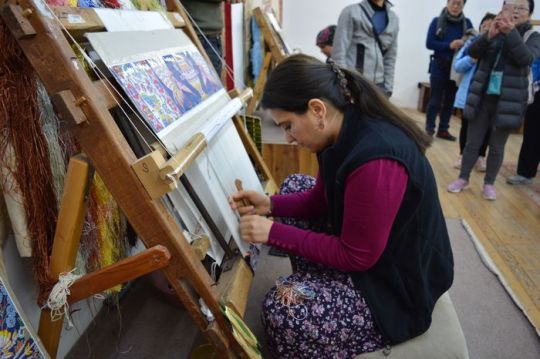
The Arrival of the Slavs in the Balkans
Background
The Slavs, originating from the eastern regions of the Russian steppe, arrived in the Balkan Peninsula around the 5th century. Over the next two and a half centuries, they gradually occupied the area, pushing aside the local Hellenized population, especially in Thrace and Macedonia. By the end of this period, the Slavs had settled across the entire peninsula, except for the coastal regions where the existing inhabitants relied on the military strength of Byzantium to keep the new settlers away.
Byzantine Relations with the Slavs
The Byzantine emperors did not see the Slavs as enemies. The Slavs were peaceful tribes who became farmers and herders. They were not aggressive or politically driven. Over time, the Slavic settlers were even called upon to fight alongside the Byzantines against common enemies. The Byzantine ruling court viewed the gradual settlement of Slavic farmers and herdsmen in the Balkans favorably City Tour Istanbul.
Old Bulgarians’ Arrival (Around 650 A.D.)
Around 650 A.D., a powerful group of Old Bulgarians, led by their khan Asparukh, arrived at the banks of the Danube, dividing Romania from Bulgaria. Settling in North Dobrudja, they initiated raids on Byzantine territory. The Old Bulgarians had originated from the region between the Volga River and its tributary, the Kama. Unlike the Slavs, they were more politically oriented. Over the centuries, small migrant groups of Old Bulgarians had integrated into Slavic communities. The Old Bulgarians, skilled organizers, extended their political influence over the Slavs, providing them with a name, a sense of unity, and leadership. They adopted the Slavs’ language and embraced a greater sense of democratic policy.
0 notes
Photo
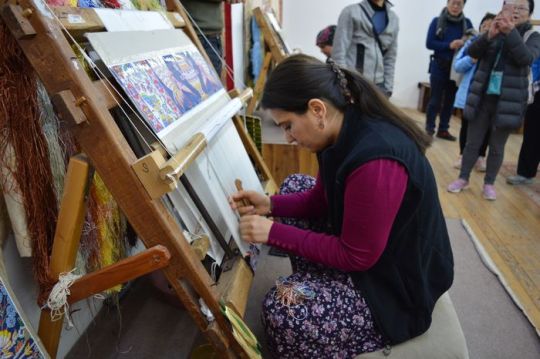
The Arrival of the Slavs in the Balkans
Background
The Slavs, originating from the eastern regions of the Russian steppe, arrived in the Balkan Peninsula around the 5th century. Over the next two and a half centuries, they gradually occupied the area, pushing aside the local Hellenized population, especially in Thrace and Macedonia. By the end of this period, the Slavs had settled across the entire peninsula, except for the coastal regions where the existing inhabitants relied on the military strength of Byzantium to keep the new settlers away.
Byzantine Relations with the Slavs
The Byzantine emperors did not see the Slavs as enemies. The Slavs were peaceful tribes who became farmers and herders. They were not aggressive or politically driven. Over time, the Slavic settlers were even called upon to fight alongside the Byzantines against common enemies. The Byzantine ruling court viewed the gradual settlement of Slavic farmers and herdsmen in the Balkans favorably City Tour Istanbul.
Old Bulgarians’ Arrival (Around 650 A.D.)
Around 650 A.D., a powerful group of Old Bulgarians, led by their khan Asparukh, arrived at the banks of the Danube, dividing Romania from Bulgaria. Settling in North Dobrudja, they initiated raids on Byzantine territory. The Old Bulgarians had originated from the region between the Volga River and its tributary, the Kama. Unlike the Slavs, they were more politically oriented. Over the centuries, small migrant groups of Old Bulgarians had integrated into Slavic communities. The Old Bulgarians, skilled organizers, extended their political influence over the Slavs, providing them with a name, a sense of unity, and leadership. They adopted the Slavs’ language and embraced a greater sense of democratic policy.
0 notes
Photo

The Arrival of the Slavs in the Balkans
Background
The Slavs, originating from the eastern regions of the Russian steppe, arrived in the Balkan Peninsula around the 5th century. Over the next two and a half centuries, they gradually occupied the area, pushing aside the local Hellenized population, especially in Thrace and Macedonia. By the end of this period, the Slavs had settled across the entire peninsula, except for the coastal regions where the existing inhabitants relied on the military strength of Byzantium to keep the new settlers away.
Byzantine Relations with the Slavs
The Byzantine emperors did not see the Slavs as enemies. The Slavs were peaceful tribes who became farmers and herders. They were not aggressive or politically driven. Over time, the Slavic settlers were even called upon to fight alongside the Byzantines against common enemies. The Byzantine ruling court viewed the gradual settlement of Slavic farmers and herdsmen in the Balkans favorably City Tour Istanbul.
Old Bulgarians’ Arrival (Around 650 A.D.)
Around 650 A.D., a powerful group of Old Bulgarians, led by their khan Asparukh, arrived at the banks of the Danube, dividing Romania from Bulgaria. Settling in North Dobrudja, they initiated raids on Byzantine territory. The Old Bulgarians had originated from the region between the Volga River and its tributary, the Kama. Unlike the Slavs, they were more politically oriented. Over the centuries, small migrant groups of Old Bulgarians had integrated into Slavic communities. The Old Bulgarians, skilled organizers, extended their political influence over the Slavs, providing them with a name, a sense of unity, and leadership. They adopted the Slavs’ language and embraced a greater sense of democratic policy.
0 notes
Photo

Bulgaria's Ascension to Independence
A Flourishing Dawn
A Milestone Attained
With the formal recognition of Bulgaria’s independence, the nation achieved an esteemed legal status comparable to its European counterparts. This momentous event marked the commencement of a transformative era for the Bulgarian people.
Navigating Between Orient and Europe
Over three decades, Bulgarians navigated the critical juncture between the Orient and Europe. Eager to break free from the economic inertia of the Ottoman Empire, they swiftly sought to align themselves with the advanced nations of the continent.
The Rise of Bulgarian Industry
In the initial decade of the 20th century, Bulgaria’s fledgling industry witnessed an extraordinary surge, achieving a sevenfold increase in production. The state actively supported local industries through tax concessions and protective custom policies, fostering a burgeoning economic landscape.
Agriculture, Commerce, and Industry Advance
Bulgaria’s rapid economic development during the late 19th and early 20th centuries manifested in notable progress across agricultural, commercial, and industrial domains. By 1910, the nation had outpaced its neighbors in various economic indicators Private Turkey Tours, signaling its emergence as a regional economic powerhouse.
A Nationwide Revival
A cultural and intellectual renaissance swept across Bulgaria, leaving an indelible mark on science, literature, arts, and sports. This pervasive renewal, fueled by the nation’s promising economic and spiritual potential, positioned Bulgaria as a beacon of progress.
Empowered by Promise, Confronting National Challenges
By 1912, fortified by economic prosperity and a renewed national spirit, Bulgarians were prepared to address their national question through military means. This era of affluence and cultural resurgence laid the foundation for Bulgaria’s journey towards increased autonomy and global recognition.
0 notes
Photo
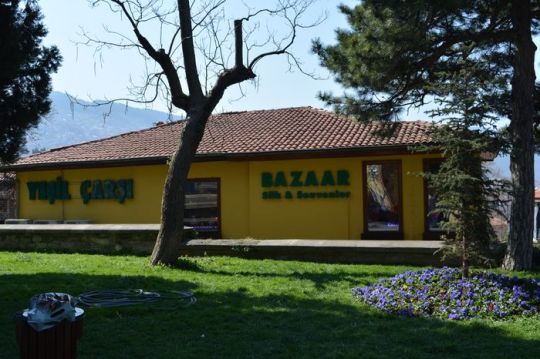
The Unveiling of Unspeakable Horrors
Women’s Descent into Despair
Confessions of Dishonour A Brave Prelude
In the shadow of unthinkable horrors, women found courage in the act of confessional narration. They stood before the world, their voices trembling yet resolute, as they uttered the word “dishonour.” But what lay ahead was a descent into a darkness far more profound and agonizing.
Beyond Dishonour The Stain of Defilement
The narratives unfold, revealing that for women subjected to the brutality of Turkish oppression, dishonour was but a prelude. A woman’s suffering extended beyond mere shame; she faced a harrowing journey of being stained, defiled, and degraded. These stories depict a descent into a nightmarish reality, where self-loathing becomes an indelible mark, and the mirror reflects a stranger tainted by the hands of cruelty.
Echoes of Despair A Mother’s Agony for Her Daughters
The women, in their heart-wrenching confessions, weren’t shedding tears for themselves alone. A more profound grief engulfed them as they recounted the atrocities inflicted upon their daughters. Innocent and tender girls of twelve and fifteen, even children Balkan Tours, became victims of the same brutalization. A mother’s agony extended beyond personal suffering to encompass the unbearable pain of witnessing the desecration of her offspring.
Silent Screams Why Share the Unbearable?
The question arises—why these women chose to come forward, to expose their deepest wounds and utter the unspeakable? It transcends the burden of personal injustice and the foul, dreadful wrongs inflicted upon them. Perhaps, it’s the spirit wounded beyond endurance, impelled by an invisible force to scream out the injustices that Heaven must hear, if not see. A feeble hope, perhaps, that someday justice will prevail, and the avenging hand of retribution will reach those responsible.
The Unheard Stories Unspeakable Horrors Left Untold
The sheer horror embedded in these narratives defies repetition. The tales of unspeakable brutality, though left untold here, serve as a testament to the depth of human suffering. In a world where such atrocities persist, the voices that dare to break the silence become beacons, exposing the need for justice, compassion, and an unwavering commitment to end the cycle of cruelty.
0 notes
Photo
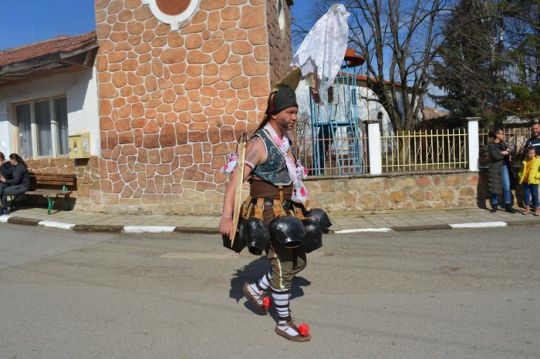
The Resilient Spirit of Perustitza's Daughters
A Tale of Courage Amidst Chaos
In the harrowing tale of Perustitza’s siege, a remarkable narrative emerges, spotlighting the indomitable courage of its young girls who, facing imminent danger, defied societal norms to ensure their survival. The absence of a clear command structure among the villagers made their defense against the menacing Bashi-Bazouks all the more challenging, yet the community rallied together to confront the impending threat.
During the three days from Tuesday to Thursday, the villagers found themselves in a desperate struggle for survival. What is particularly striking is the absence of a discernible leader orchestrating the defense. Despite this leadership vacuum, the community displayed a collective resolve by distributing rations, posting sentries, and projecting a bold front against their aggressors.
Amidst this chaos, a curious and courageous decision was made regarding the village’s young girls. Recognizing the potential brutality they might face if captured by the Bashi-Bazouks, a collective decision was reached within the confines of the village church. All girls over the age of ten were to don boys’ clothing, transforming their appearance in the hopes of escaping the horrifying fate that awaited them if the worst came to pass.
The Armenian girl, a witness to this extraordinary transformation, recounts the efforts of her peers to assume a disguise. Nearly all the young girls, fueled by a determination to protect themselves, adopted the attire of their brothers. They skillfully cut off their long hair and endeavored to pass as boys, a desperate measure taken to evade the infamous brutality of the Bashi-Bazouks.
In the face of such adversity, these girls displayed immense bravery. The Armenian girl, although offered a boys’ suit, opted to endure the siege in her own attire. She notes that many of the disguised girls expressed a willingness to wield a weapon in defense of their community, underscoring the shared commitment to survival among the private tours bulgaria besieged villagers. Unfortunately, the scarcity of arms, even among the men, meant that the women were left without means to actively contribute to the defense.
Protective walls
The resilience of these girls, however, is not without its share of tragedy. As they ventured outside the protective walls, they were often mistaken for boys and fell victim to ruthless gunfire. Many lost their lives in this tragic case of mistaken identity. Despite the perils they faced, those who survived did so with their honor intact. The bright pairs of eyes that met the gaze of onlookers, undeterred by the missing tresses, spoke volumes of the unyielding spirit of Perustitza’s daughters.
In the face of chaos, uncertainty, and the ever-present threat of brutality, the young girls of Perustitza made a bold stand, challenging societal norms and demonstrating a resilience that defied the darkest expectations. Their story is a testament to the strength that can be found in unity and the unwavering human spirit in the face of adversity. Perustitza’s daughters, through their courage and sacrifice, etch a chapter of inspiration in the annals of resilience and defiance.
0 notes
Photo

MacGahan’s Work Recreates
Written with a polemic passion, harmoniously blending feeling with logic, in the eruptive style that results from the excitement and energy generated by controlled thoughts, with all the epithets, the metaphors, the questioning and exclamatory sentences, with all the catch-words and the landscape details, MacGahan’s work recreates the moving scenes and characters within an intense atmosphere which reveals the author’s deep psychological insight of the heroic days of the April uprising.
In the context of the shrieking blood of the revolution, the governments and state institutions of the epoch found caricatures of themselves bearing an uncanny resemblance to reality. MacGahan openly accused the great European powers which, under the pretence of protecting the Balkan peoples, followed a demagogic policy of conquest. MacGahan delivered a revocatory, frontal attack on the British prime- minister Disraeli and his foreign minister Lord Derby City Tour Istanbul, who represented the main political support for the criminal and corrupt Turkish government.
Turkish government
AiacGahan revealed clearly that the Turkish government and the landlords could no longer cling to their power, and that the time for the higher strata of Turkish society to abandon its traditional style of living has long since been at hand. The progress of the people both on the Bulgarian and on the Turkish side is objectively conditioned. In the existing revolutionary situation the network of Bulgarian revolutionary committees gave way to exculpated fighting actions.
MacGahan demonstrated how the conception of territorial integrity for Turkey and the preserving of the «status quo» are essentially incompatible. Lie denounced the mass slaughters as a means of solving the national question and exercised a strong influence in the consequent changes in Russian and British foreign policies.
MacGahan’s reports are the instigator of that powerful movement known as the Bulgarian agitation which developed in England throughout 1876 and marked the most profamily democratic display in the secular annals of English history. All internal and external political life in England in 1876 had the April uprising as its prime mover. The Queen, Parliament, government, political parties, church, intelegentsia, large sections from the mass of the population, particularly from the working class, surged together on protest over the question of attitude towards Bulgaria.
0 notes
Photo
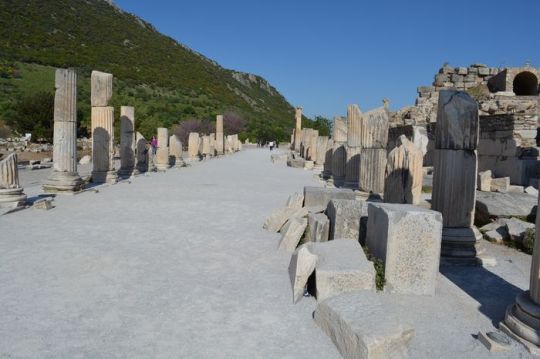
MacGahan Arrived Philippopolis
No journalist was ever more suited to such a mission as was MacGahan. He arrived in Philippopolis on fitly 23rd and immediately set about his task. On the other hand, the British government instructed Sir Henry Elliot, ambassador to Constantinople, to head an official inquiry, and Walter Baring, secretary of the Legation, was given the task.
At the suggestion of Dr. George Washburn, director of Robert College, the American plenipotentiary minister Maynard decided in his turn to inquire into the atrocities and entrusted the General-consul Eugene Schuyler, a well-known expert of his time on Russian foreign policy, with this third fact-finding expedition. The result was three parallel investigations led respectively by MacGahan, Schuyler and Baring.
Schuyler and Baring (the latter escorted by Guaracino, an official at the British consular service and self-avowed philo-turk) became the diplomatic satellites of the young journalist, and if Schuyler’s report published on August 28th, was accepted as a competent confirmation of MacGahan’s accounts City Tour Istanbul, the British diplomat refuted the conclusions he had previously been instructed to draw.
Bulgarian soil
MacGahan’s method of investigation is that of direct contact with the reality of the situation. In this relation is shown the intense humanism and combative attitude of the author in the face of all that is humiliating and a defiling of humanity. The principal figure in these reports is the martyred Bulgarian people and the Bulgarian soil, charred and bloodsoaked by the Turkish secular tyrant.
At Panagurishte, on the fortifications stained with blood, in the church at Batak, transformed into a horrible graveyard, before the heaped human skulls, amidst the crowds of widows and orphans, flocking beneath a moaning wafting heavenwards, amidst the witnesses of unseen human exploit of honor in Perustitsa, MacGahan followed in the wake of the insurgents and fulfilled the duty imposed on him by his conscience.
0 notes
Photo
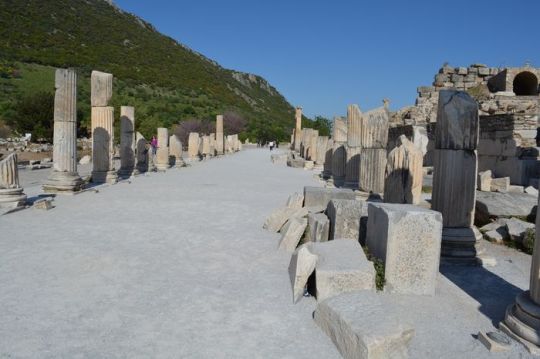
MacGahan Arrived Philippopolis
No journalist was ever more suited to such a mission as was MacGahan. He arrived in Philippopolis on fitly 23rd and immediately set about his task. On the other hand, the British government instructed Sir Henry Elliot, ambassador to Constantinople, to head an official inquiry, and Walter Baring, secretary of the Legation, was given the task.
At the suggestion of Dr. George Washburn, director of Robert College, the American plenipotentiary minister Maynard decided in his turn to inquire into the atrocities and entrusted the General-consul Eugene Schuyler, a well-known expert of his time on Russian foreign policy, with this third fact-finding expedition. The result was three parallel investigations led respectively by MacGahan, Schuyler and Baring.
Schuyler and Baring (the latter escorted by Guaracino, an official at the British consular service and self-avowed philo-turk) became the diplomatic satellites of the young journalist, and if Schuyler’s report published on August 28th, was accepted as a competent confirmation of MacGahan’s accounts City Tour Istanbul, the British diplomat refuted the conclusions he had previously been instructed to draw.
Bulgarian soil
MacGahan’s method of investigation is that of direct contact with the reality of the situation. In this relation is shown the intense humanism and combative attitude of the author in the face of all that is humiliating and a defiling of humanity. The principal figure in these reports is the martyred Bulgarian people and the Bulgarian soil, charred and bloodsoaked by the Turkish secular tyrant.
At Panagurishte, on the fortifications stained with blood, in the church at Batak, transformed into a horrible graveyard, before the heaped human skulls, amidst the crowds of widows and orphans, flocking beneath a moaning wafting heavenwards, amidst the witnesses of unseen human exploit of honor in Perustitsa, MacGahan followed in the wake of the insurgents and fulfilled the duty imposed on him by his conscience.
0 notes
Photo

How many were in your family
“ How many were in your family ?99 we would ask. “Ten,” the answer would be, perhaps. “How many remain?” “Two.” “How many in yours?” “Eight.” “ How many remain V* “ Three.” “ How many in yours ? ” “ Fifteen.” “How many remain? ” “ Five.” And so on in families numbering from five to twenty, in which only remained from one to five persons.
One old woman came to us, wringing her hands, and crying in that hard tearless manner of which I have already spoken, and when we could get her sufficiently calmed to tell us her story, she said she had three tall handsome sons, Ghiorghy, Ivantchu, and Stoyan, and they were all married to good and dutiful wives, Reika, Stoyanka, and Anka, and they had between them twelve beautiful children, Anghel and Tragan and Ghiorghy and Ivantchu, Letko, Assen, Boydan, Stoyan, Tonka, Gingka, Marika, and Reika, so that the family counted, all told, nineteen persons living under the same roof Private Tours Istanbul.
Blagoi Christostoff
Of all this large flourishing family, the tall handsome sons, the dutiful wives, and the twelve beautiful children, there remained only this poor old grandmother. They were all brutally slaughtered to the last one. Of this flourishing family tree there remained only this lifeless withered trunk, and the poor old woman sat down and beat her head, and fairly screamed out her despair. There was an old man who told us of his uncle, Blagoi Christostoff, a venerable patriarch of the grand old type.
He had five sons married, who had among them twenty-seven children, thus making a family that with the wives counted up a sum total of thirty-nine persons living under the same roof. Of this enormous family there are only eight left.
We might have gone on for hours listening to these stories had we but time. There was another family of twenty-five, of whom seven were left; one of twenty, of whom eight were left; numbers of them of ten to fifteen, of whom one to five were left; and we heard besides of many families that had been completely annihilated, not one remaining. The people who committed this wholesale slaughter were not Circassians, as has been supposed, but the Turks of the neighbouring villages, led by the Achmet-Agha already spoken of.
0 notes
Photo
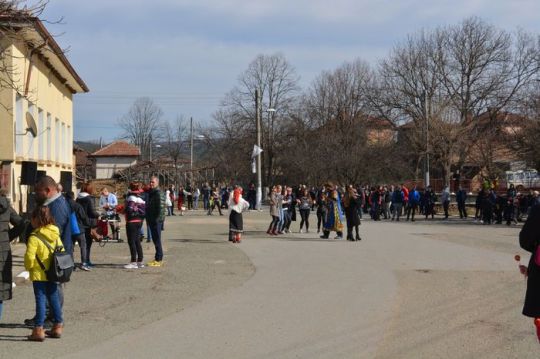
Kings and Queens
I was at first inclined to think it was the tall woman who must be the Queen, as she more nearly filled my ideas of what an Amazon should be, and I was surprised to learn that it was not she but the young girl who had been playing at “Kings and Queens” with such disastrous effect to herself. A slight, graceful form, only too plainly seen through her scanty, miserable clothing, large hazel eyes, an oval face, slightly browned by the sun, straight nose, and a veritable little rosebud of a mouth. She was thin and weak, and seemed scarcely able to stand, and the young girlish face wore a dejected, brokenhearted look that was sad to see.
A handkerchief was thrown over her head, and she wore a coarse brown linsey-woolsey jacket and a short petticoat of the same material that scarcely reached below her knees, exposing a white delicate foot. She had no shoes and stockings, and this costume she afterwards told me was not her own, but was given her after she had been stripped of her own clothing. She told us her story in a few words, from which it appeared she had taken some part in the insurrection indirectly, but that the report of her having been crowned Queen of the Bulgarians was a pure fiction Private Tours Istanbul.
Queen of the Bulgarians
The name “Queen of the Bulgarians” had been given her by the Turks in mockery, coupled with the vilest epithets and insults that a cowardly brutal soldiery could think of. She had been in prison two months, and during all this time had been given nothing to eat but bread and water. It was no wonder she looked weak and ill. As she was evidently too weak to stand talking there long, Mr. Schuyler told her he would try to have her set at liberty as soon as possible, and then we took our leave.
This visit of Mr. Schuyler’s and the interest he showed in her, resulted in her being released next day on bail, to be definitely set at liberty a few days later. I paid her a visit the day after in the khan or caravansary where she with her companion had found a temporary shelter, and obtained her story in detail.
0 notes
Photo

Kings and Queens
I was at first inclined to think it was the tall woman who must be the Queen, as she more nearly filled my ideas of what an Amazon should be, and I was surprised to learn that it was not she but the young girl who had been playing at “Kings and Queens” with such disastrous effect to herself. A slight, graceful form, only too plainly seen through her scanty, miserable clothing, large hazel eyes, an oval face, slightly browned by the sun, straight nose, and a veritable little rosebud of a mouth. She was thin and weak, and seemed scarcely able to stand, and the young girlish face wore a dejected, brokenhearted look that was sad to see.
A handkerchief was thrown over her head, and she wore a coarse brown linsey-woolsey jacket and a short petticoat of the same material that scarcely reached below her knees, exposing a white delicate foot. She had no shoes and stockings, and this costume she afterwards told me was not her own, but was given her after she had been stripped of her own clothing. She told us her story in a few words, from which it appeared she had taken some part in the insurrection indirectly, but that the report of her having been crowned Queen of the Bulgarians was a pure fiction Private Tours Istanbul.
Queen of the Bulgarians
The name “Queen of the Bulgarians” had been given her by the Turks in mockery, coupled with the vilest epithets and insults that a cowardly brutal soldiery could think of. She had been in prison two months, and during all this time had been given nothing to eat but bread and water. It was no wonder she looked weak and ill. As she was evidently too weak to stand talking there long, Mr. Schuyler told her he would try to have her set at liberty as soon as possible, and then we took our leave.
This visit of Mr. Schuyler’s and the interest he showed in her, resulted in her being released next day on bail, to be definitely set at liberty a few days later. I paid her a visit the day after in the khan or caravansary where she with her companion had found a temporary shelter, and obtained her story in detail.
0 notes
Photo
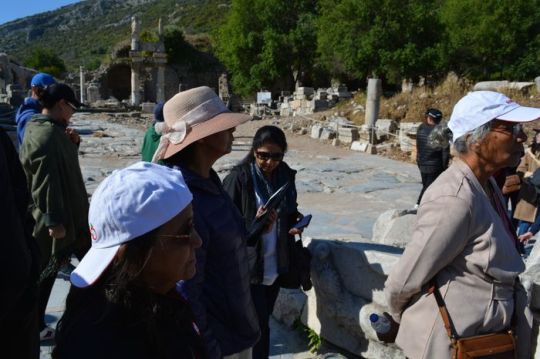
How many were in your family
“ How many were in your family ?99 we would ask. “Ten,” the answer would be, perhaps. “How many remain?” “Two.” “How many in yours?” “Eight.” “ How many remain V* “ Three.” “ How many in yours ? ” “ Fifteen.” “How many remain? ” “ Five.” And so on in families numbering from five to twenty, in which only remained from one to five persons.
One old woman came to us, wringing her hands, and crying in that hard tearless manner of which I have already spoken, and when we could get her sufficiently calmed to tell us her story, she said she had three tall handsome sons, Ghiorghy, Ivantchu, and Stoyan, and they were all married to good and dutiful wives, Reika, Stoyanka, and Anka, and they had between them twelve beautiful children, Anghel and Tragan and Ghiorghy and Ivantchu, Letko, Assen, Boydan, Stoyan, Tonka, Gingka, Marika, and Reika, so that the family counted, all told, nineteen persons living under the same roof Private Tours Istanbul.
Blagoi Christostoff
Of all this large flourishing family, the tall handsome sons, the dutiful wives, and the twelve beautiful children, there remained only this poor old grandmother. They were all brutally slaughtered to the last one. Of this flourishing family tree there remained only this lifeless withered trunk, and the poor old woman sat down and beat her head, and fairly screamed out her despair. There was an old man who told us of his uncle, Blagoi Christostoff, a venerable patriarch of the grand old type.
He had five sons married, who had among them twenty-seven children, thus making a family that with the wives counted up a sum total of thirty-nine persons living under the same roof. Of this enormous family there are only eight left.
We might have gone on for hours listening to these stories had we but time. There was another family of twenty-five, of whom seven were left; one of twenty, of whom eight were left; numbers of them of ten to fifteen, of whom one to five were left; and we heard besides of many families that had been completely annihilated, not one remaining. The people who committed this wholesale slaughter were not Circassians, as has been supposed, but the Turks of the neighbouring villages, led by the Achmet-Agha already spoken of.
0 notes
Photo
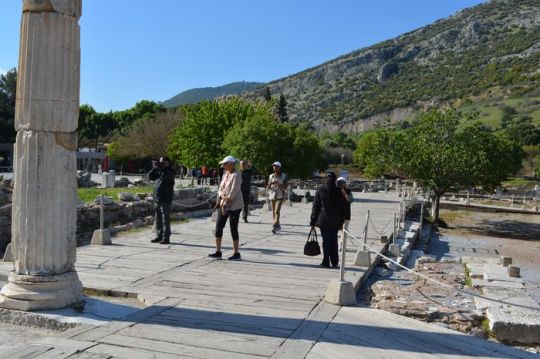
Galin Jordanov
The aim of this booklet is simple: one who has no time to read vast works can, by these few dozens of pages, get in touch with the most important events that took place during the past two millennia on the territory south of the river Danube and west of the Black Sea – the land that bears the name Bulgaria…
Galin Jordanov
A land like a human palm…
A bigger land I don’t require.
I’m glad your mountains are flint-hard And that your blood has Southern fire.
Taken from Georgi Djagarov’s “Bulgaria”, translated by Peter Tempest
From Prehistoric Times to The Forming Of A Nation
Thracians, Greeks and Romans
Archaeological excavations had shown in an indisputable way the existence of primitive man earlier than hundreds of thousands of years in the lands inhabited today by Bulgarians. Impressing collections of Hint, bone and horn tools as well as earthenware and ceramics used during the Copper and Stone Age can be seen in most Bulgarian museums. Works of idol plastic arts reveal the diverse and unique spiritual life that took place in these lands Private Tours Balkan.
However, the earliest inhabitants of the Bulgarian lands were recognized to be the Thracians – mentioned by Herodotus as “one of the most multitudinous peoples” of the Ancient world and referred to as the “horse bridlers” in Homer’s Iliad. Five thousand years ago numerous tribes of them inhabited not only the Balkan Peninsula – south of the Danube, along the river Maritza and the south-western parts of present- day Bulgaria – but also Asia Minor and some of the islands in the Aegean Sea. Thracians were of Indo- European origin and certainly represent the ethnical basis that served later as on of the genetic ingredients for the forming of the Bulgarian nation.
They were acquainted with the ways of producing iron tools and dealt well with farming or animal breeding. Thracian kings minted coins and had at their disposal skilled goldsmiths for which testimonies are the famous Thracian silver and golden treasures – such as the Rogozen or the Panagyurishte treasures – found in our lands and exposed in many countries of the world. But along with that some ancient historians admit that part of their tribes have shown themselves as good sailors who rivalled in experience the rulers of the marine expanse, the Greeks, and sometimes acted even like pirates…
Thracian culture of that period was strongly influenced by the Greek colonization of the Black Sea coastline after the 7th century B. C. as the multiple settlers of the Greek city- states established economic and cultural exchange with the Thracian lands. So was initiated the processes of Hellenization of a part of the Thracian ethnos and the mighty Greek civilization this way enriched the Thracian culture. Thracian religion took notions from the Greek divinities and, on their part, the Greeks paid tribute to the legendary Thracian singer and musician Orpheus, who had an important position in Thracian mythology.
0 notes